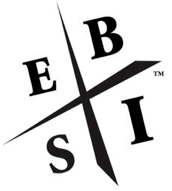Blog | Entrepreneurship
How to Be Financially Successful as a Woman
October 15, 2015
The pay gap between female executives and business owners
Ladies, how were you told to become successful? If you were like most girls, you were told to get into a good school, get a good job, work hard, save money, and invest in a diversified portfolio of stocks, bonds, and mutual funds.
Most women have followed this advice. And many women have paved the way, pushing through the glass ceiling. Yet, over and over again, it's become clear that as a woman, it's hard to get ahead in a man's world.
Do a Google search of "gender pay gap" and you can read to your heart's content.
But what if there was a different way? What if you didn't have to play the "climb the corporate ladder" game in order to be successful?
Thankfully there is-and that path is entrepreneurship.
As BizWomen reports, "When it comes to income and wealth, it's better to be a female business owner than a woman climbing the corporate ladder."
According to the report conducted by The Business Journals, a study of 1,354 business owners, partners, and C-suite executives revealed that women who own businesses have a higher net worth than their corporate counterparts - $1.1 million versus $319,000.
Going further, "They also have higher incomes, with owners reporting an average of $144,000 per year compared to $92,000 for women working full time."
How can this be? Aren't we supposed to get that high-paying job and trust that everything will fall into line? Apparently not.
The secret lies in the CASHFLOW Quadrant, which shows the difference between employees, self-employed, business owners, and investors.

Those who are on the left side of the quadrant, employees and self-employed, may have high salaries, but they also pay the most in taxes and trade their time for money. So, no matter how hard they work, the government takes more of their money and they only have so much time to sell.
Those on the right side of the quadrant, business owners and investors, pay the least in taxes and create or invest in assets that make them money-even while they are sleeping.
The reason why women entrepreneurs have a higher net worth and make more money is simple-they have a higher financial intelligence.
Here's the good news. It used to be that in order to be on the right side of the CAHSFLOW Quadrant you either had to have lots of employees and a big business or have lots of money to invest in big deals.
When it comes to the B part of the quadrant, that's not the case anymore.
Now, with a good laptop, an Internet connection, and the right software, you can duplicate the work of dozens of employees and run a successful business.
The key lies simply in the systems and processes you create. The difference between an employee and a self-employed individual is that business owners own systems while employees and self-employed folks own a job or their time. It's that simple.
If you want to grow beyond where you are today-to become more successful and wealthy, perhaps it's time to start thinking about making a switch from one side of the CASHFLOW Quadrant to the other.
What is it that you do for work that you could turn into a system that you own?
The answer to that question starts with investing in your financial education. Once you learn to see the opportunities around you, you'll go from "What should I do?" to "Which of these great ideas should I put my energy into?" Get out of the rat race, and into the entrepreneurship game. Today's the day.
Original publish date:
October 15, 2015